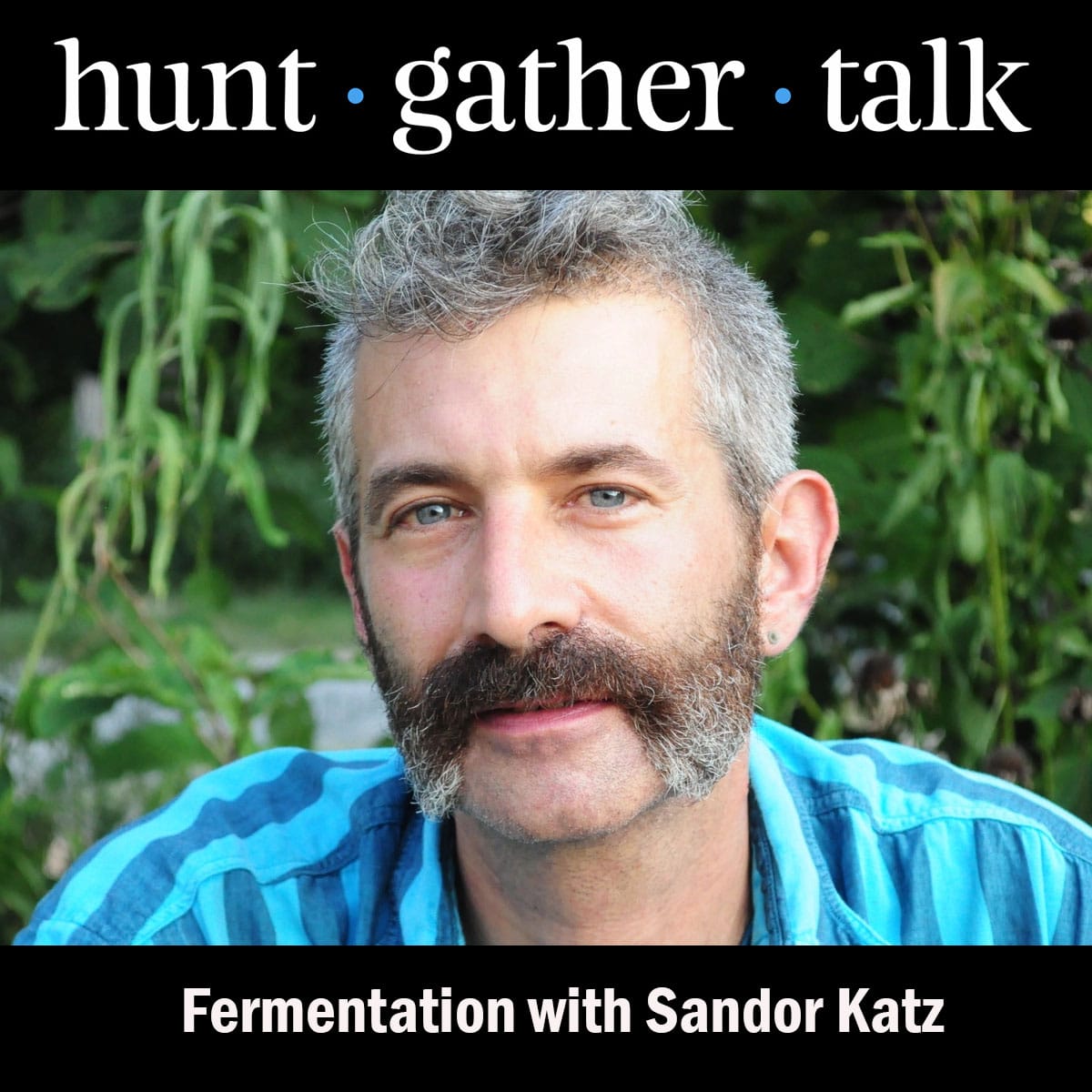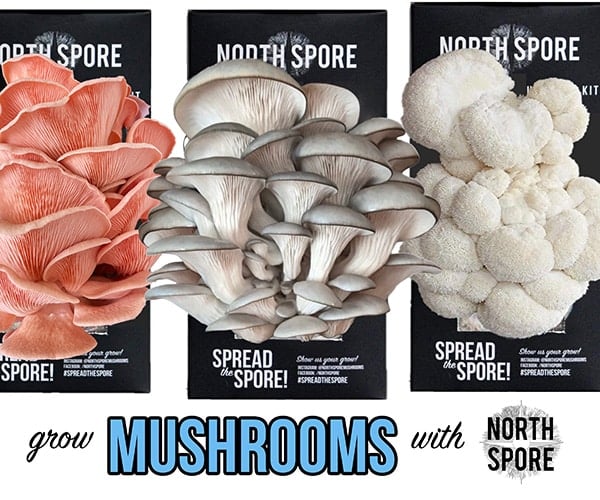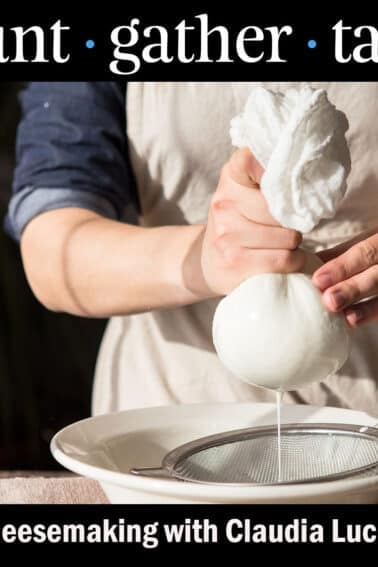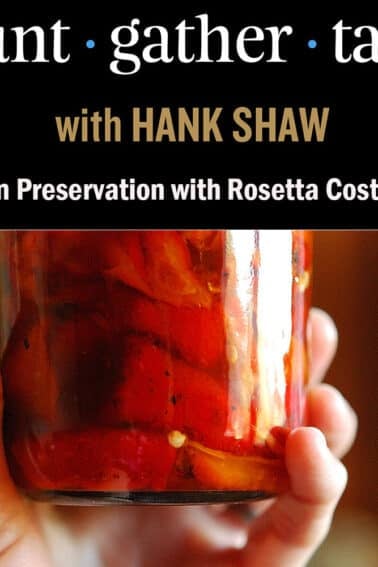As an Amazon Associate I earn from qualifying purchases.
Podcast: Play in new window | Download
My guest in this episode of Hunt Gather Talk needs no introduction if you are at all into fermentation: Sandor Katz is a legend in this area, and we talk about all sorts of cool ferments, as well as about his fantastic books and classes, what he’s working on now, and how he got to this place in his life.

Hunt Gather Talk is sponsored by Filson, E-Fish and Foraged Market; their generosity makes this podcast happen.
KEY LINKS
- You can learn more about Sandor Katz on his website, as well as this Wikipedia page.
- Katz has written many books on fermentation, and has links to all of them on this page.
- His main social media is on Instagram, where he goes by SandorKraut.
If you have a suggestion for a podcast topic, drop me a line at hank@huntgathercook.com.
Click Here to Subscribe via Spotify, Apple Podcasts, Google Podcasts, iTunes, Podbean, or Stitcher
Click Here to Subscribe via RSS (non-iTunes feed)
MORE PODCAST INFO
You can find archives of this season and the three previous seasons on my podcast page.





The Japanese have a really strong fermentation at home and farmhouse tsukemono pickle culture. Daikons are often dried over farmhouse rafter to remove extra moisture before salt pickling.Same for the various salted sour plums held in very high regard as a healthy pickle and source of vitamin C in wintertime. Nuke Zuke pickling is fairly unique as it uses rice bran to “quick pickle various constantly changing vegetables in a thick paste of fermenting rice bran plus vegetable pickle juice. And the pickles hold their color and texture much more that lactic acid pickled veg.
There is also a whole world of alkaline fermentations based on soy beans and various grains to make miso and all the related bean pastes used in Japanese Miso and Soy Sauce plus Korean Gochujang and all those funky Chinese fermented bean pastes. Note these are all very alkaline in nature and do not use lactic acid bacteria at all to preserve these foods. I would say that most Americans are completely unfamiliar with these mostly solid sate fermentations that do not use salt and lactic acid bacteria and brine to preserve various grains. In addition these alkaline fermentations rely and various bacterial and fungal enzymes that are considered spoilage organisms by the FDA and their presence is considered a sign of spoilage in western countries. Some of these microorganisms are Bacillus cereus and ergot fungus. Tempe, Miso and Natto are all examples of alkaline fermentations and largely performed in the solid state, at least for the fungal amylase phase of their fermentation. These are all rather advanced fermentations for the home pickle maker and when things go wrong can be extremely toxic. Sure you can look at the white fungus mycelium overgrowth on your grains but can you identify which one it is just by looking at it.
There are several fermentation breakdown products found in alkaline “fungal” fermentations that are considered rather toxic. Chinese fermented black beans are made from soy beans treated with various molds before salting and drying and always contain measurable amounts of histamine, tyramine and several other toxic amines created from breakdown of the soy bean proteins. So they should be consumed in moderation and if you are sensitive to monoamines like these, you may experience a flushing of your face and other “Chinese Restaurant Syndrome” symptoms.
The Japanese have a really strong fermentation at home and farmhouse tsukemono pickle culture. Daikons are often dried over farmhouse rafter to remove extra moisture before salt pickling.Same for the various salted sour plums held in very high regard as a healthy pickle and source of vitamin C in wintertime. Nuke Zuke pickling is fairly unique as it uses rice bran to “quick pickle various constantly changing vegetables in a thick paste of fermenting rice bran plus vegetable pickle juice. And the pickles hold their color and texture much more that lactic acid pickled veg.
There is also a whole world of alkaline fermentations based on soy beans and various grains to make miso and all the related bean pastes used in Japanese Miso and Soy Sauce plus Korean Gochujang and all those funky Chinese fermented bean pastes. Note these are all very alkaline in nature and do not use lactic acid bacteria at all to preserve these foods. I would say that most Americans are completely unfamiliar with these mostly solid sate fermentations that do not use salt and lactic acid bacteria and brine to preserve various grains. In addition these alkaline fermentations rely and various bacterial and fungal enzymes that are considered spoilage organisms by the FDA and their presence is considered a sign of spoilage in western countries. Some of these microorganisms are Bacillus cereus and ergot fungus. Tempe, Miso and Natto are all examples of alkaline fermentations and largely performed in the solid state, at least for the fungal amylase phase of their fermentation. These are all rather advanced fermentations for the home pickle maker and when things go wrong can be extremely toxic. Sure you can look at the white fungus mycelium overgrowth on your grains but can you identify which one it is just by looking at it.